Is Ice Fishing Safe? What You Need to Know Before You Go
Ice fishing combines the thrill of catching fish with the unique experience of venturing onto frozen lakes and ponds during winter months. This popular cold-weather activity attracts thousands of enthusiasts annually across northern regions, but it also carries inherent risks that shouldn’t be taken lightly. While ice fishing can be extremely safe when proper precautions are followed, the consequences of poor planning or judgment can be severe and potentially life-threatening. Before drilling your first hole in the ice, it’s essential to understand both the safety considerations and necessary preparations that can make your ice fishing adventure enjoyable rather than dangerous. This comprehensive guide will walk you through everything you need to know about ice fishing safety to ensure your winter outings remain memorable for all the right reasons.
Understanding Ice Formation and Thickness
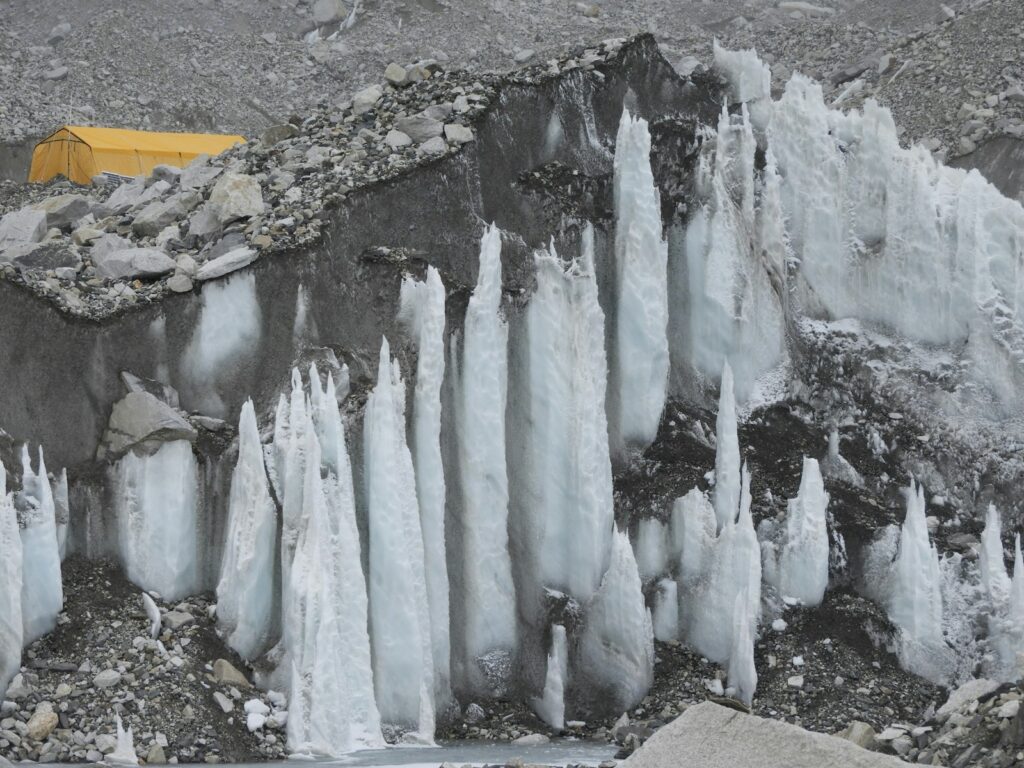
Ice doesn’t form uniformly across bodies of water, which creates one of the primary safety challenges for ice anglers. Factors such as underwater springs, currents, depth variations, and even submerged objects can cause significant differences in ice thickness within just a few feet. The general rule for safe ice fishing is a minimum of 4 inches of clear, solid ice for individual anglers on foot, 5-7 inches for small groups, 8-12 inches for snowmobiles or ATVs, and 12-15 inches for small vehicles. Remember that these measurements apply specifically to clear, blue ice that has formed consistently—white ice or “snow ice” contains air pockets and is only about half as strong as clear ice. Many experienced ice anglers live by the mantra “no ice is safe ice,” which highlights the importance of constant vigilance and assessment rather than assumptions about safety.
Essential Safety Equipment for Ice Fishing

Properly equipping yourself for ice fishing might mean the difference between a close call and a tragedy. Ice picks or ice claws should be worn around your neck at all times—these simple devices allow you to pull yourself out of the water should you break through the ice. A floating safety rope of at least 50 feet can help rescue others or allow someone to pull you to safety. A personal flotation device or ice fishing suit with built-in flotation provides crucial buoyancy if you fall through, giving you valuable time to self-rescue. Many experienced anglers also carry a spud bar (ice chisel) to test ice thickness as they walk, an emergency whistle to signal for help, and a fully charged cell phone in a waterproof case. Some even pack a change of dry clothes in a waterproof bag, recognizing that preventing hypothermia becomes the primary concern if someone gets wet in subfreezing temperatures.
Testing Ice Conditions Safely
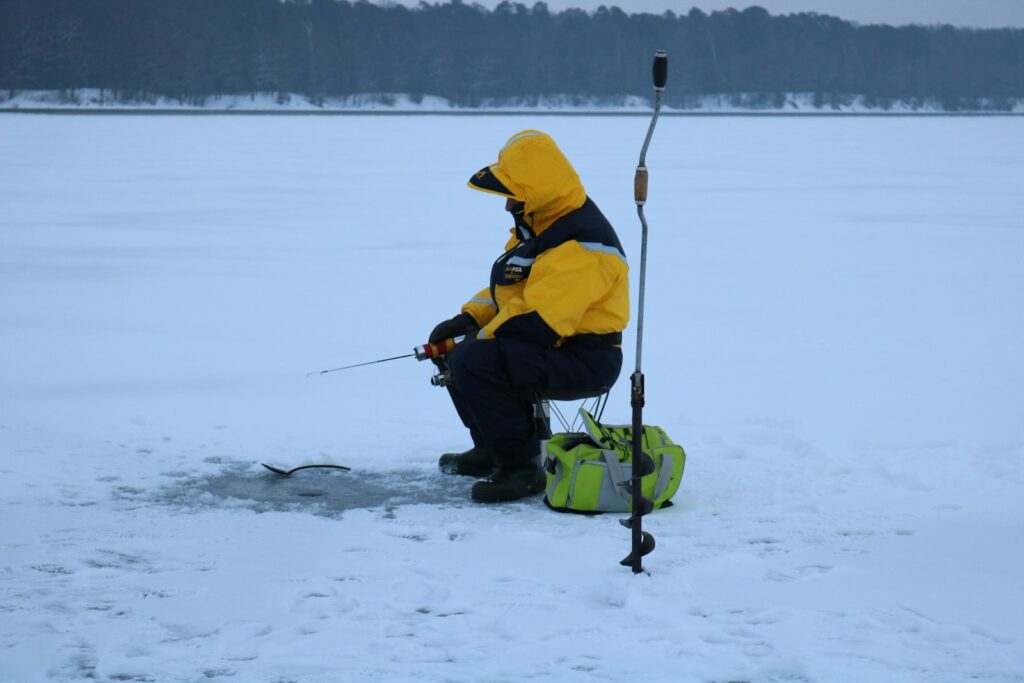
Before venturing onto frozen water, developing a systematic approach to ice testing can significantly reduce your risk. Begin by checking with local bait shops, fishing guides, or natural resource departments for current ice conditions, as they often have the most up-to-date information. When arriving at your fishing location, start from shore and use a spud bar or ice auger to check thickness every few steps as you move outward. The sound of the ice can also provide clues—solid ice typically produces a deep, resonant thud when struck, while thin or compromised ice often creates a hollow or cracking sound. Be particularly cautious around areas where water flows in or out, around dock posts, near pressure ridges, and in locations with underwater vegetation, as these features can all contribute to thinner ice. Many experienced anglers also avoid fishing alone, preferring the additional safety margin that comes with having partners watching out for each other.
Recognizing Dangerous Ice Conditions

Identifying hazardous ice conditions before they become emergencies requires both knowledge and observation skills. Dark spots or discolored areas on otherwise white ice often indicate thin sections or even open water. Cracks that radiate outward when you step on the ice suggest it’s too thin to support your weight. Areas where you can see water seeping onto the surface when pressure is applied indicate dangerously weak ice. Be particularly wary of ice near the shoreline late in the season, as rising temperatures often cause it to pull away from land first. Areas with objects protruding through the ice, such as rocks, logs, or vegetation, typically have thinner ice due to heat absorption. Snow-covered ice is particularly deceptive as the snow acts as an insulator, sometimes preventing ice from thickening while simultaneously hiding visual cues about ice conditions underneath.
Weather Considerations for Ice Safety

Weather patterns directly impact ice conditions, making meteorological awareness crucial for ice fishing safety. Extended periods of temperatures well below freezing create the strongest, most consistent ice formations, while fluctuating temperatures with cycles above and below freezing create unstable conditions. Significant snowfall on thin ice can actually push the ice downward, causing water to seep up through cracks and create dangerous slush layers. Strong winds can create pressure ridges or even break up large sections of ice on bigger lakes, completely changing conditions overnight. Rain is particularly hazardous as it not only adds weight to the ice but also transfers heat into the ice, rapidly deteriorating its strength. Many ice fishing accidents occur during early and late season transitions when temperature fluctuations are most common, or during unexpected warm spells in mid-winter that can quickly weaken seemingly solid ice.
Traveling Safely On Ice
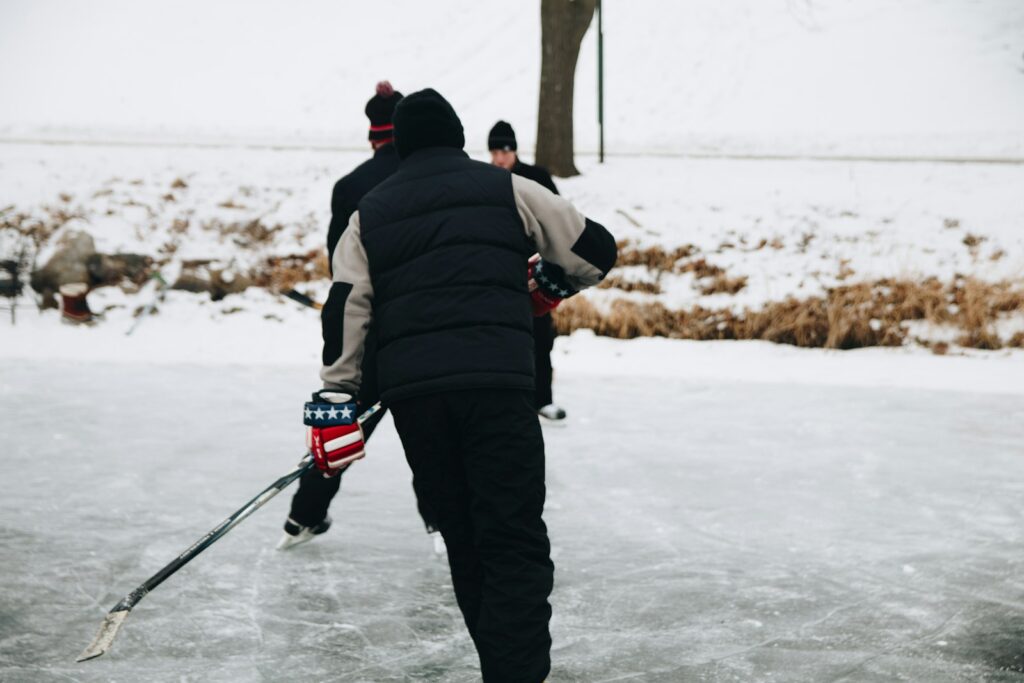
How you move across ice significantly impacts your safety margin while ice fishing. Spreading your weight more widely reduces pressure on any single point, which is why many anglers recommend walking with a wide stance or even crawling in questionable areas. When traveling with others, maintain significant distance between people—at least 10-15 feet—to prevent concentrated weight that could break through otherwise adequate ice. For similar reasons, avoid gathering in large groups in a single area unless the ice is extremely thick. When using vehicles, avoid stopping or parking close together, and never drive in single-file lines which can create linear stress points. Some experienced ice anglers even wear microspikes or cleats on their boots to prevent dangerous falls that could cause injury or unconsciousness—a particularly dangerous situation in the cold. Always plan your route in advance, ideally following established tracks if available, while remaining vigilant for changing conditions.
What To Do If You Fall Through The Ice
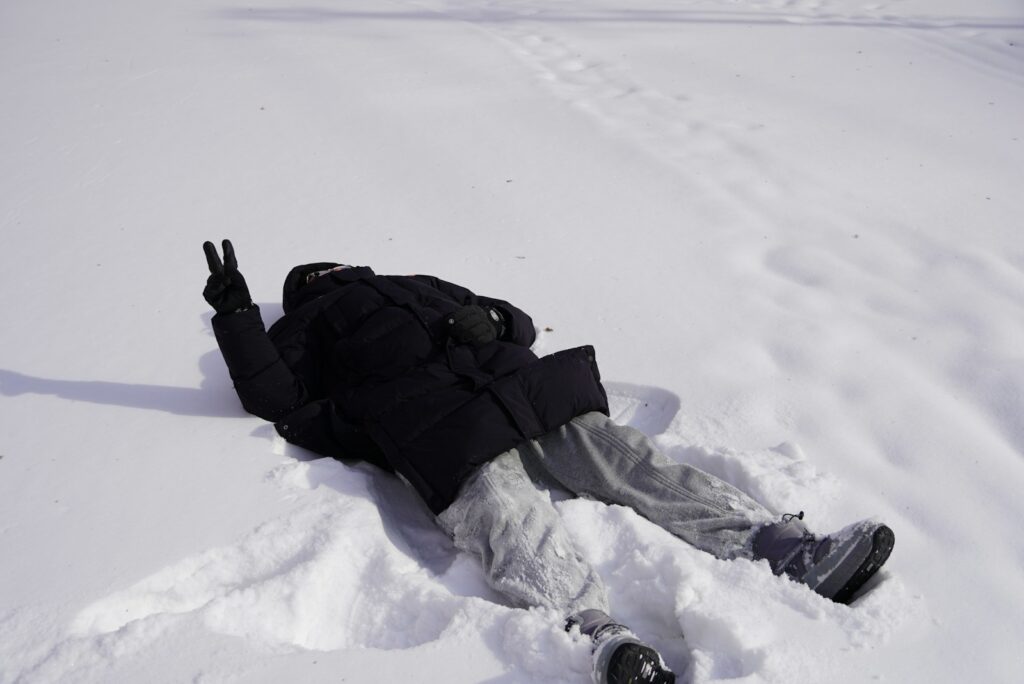
Despite taking precautions, knowing how to respond if you break through ice could save your life. The initial shock of cold water immersion can trigger an involuntary gasping reflex, so your first priority is controlling your breathing to prevent water inhalation. Fight the urge to thrash or swim; instead, extend your arms forward onto the unbroken ice surface to distribute your weight. Kick your feet to achieve a horizontal position, then use your ice picks to pull yourself forward onto the ice while continuing to kick. Once partially out, roll away from the broken ice rather than standing immediately, which distributes your weight more evenly. Continue rolling until you’re several body lengths from the hole before carefully standing and seeking warmth. Remember that you have approximately 1-10 minutes of functional movement before cold water immersion seriously impairs your physical capabilities, making swift, practiced actions essential for survival.
How To Rescue Someone Who Has Fallen Through

Witnessing someone fall through the ice requires immediate but careful action to avoid creating multiple victims. The most important rule is to avoid getting too close to the hole—many would-be rescuers end up in the water themselves. Instead, call for help, then extend a reaching assist using a rope, branch, fishing rod, or anything else that allows you to maintain a safe distance. If the victim can’t grasp the item, lie flat on the ice to distribute your weight and carefully push the object closer. Instruct the victim to kick their feet to achieve a horizontal position while grasping the rescue item. Once they begin emerging from the water, encourage them to roll away from the hole rather than trying to stand immediately. After a successful rescue, hypothermia becomes the primary concern—remove wet clothing, provide dry alternatives if available, and seek emergency medical attention even if the victim seems fine, as dangerous delayed symptoms can develop.
Dressing Properly for Ice Fishing Safety
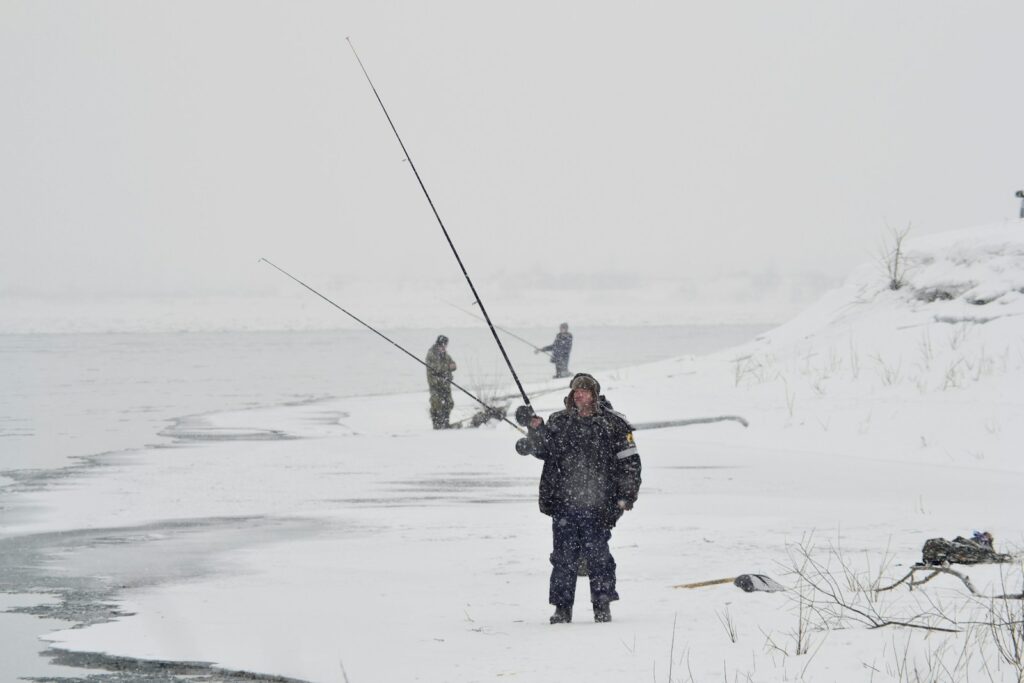
Appropriate clothing serves dual purposes in ice fishing safety: preventing hypothermia during normal fishing and providing critical survival time if you fall through. The layering approach works best, starting with moisture-wicking base layers that keep sweat away from your skin, followed by insulating middle layers of wool or synthetic materials, and topped with a windproof and waterproof outer layer. Specialized ice fishing suits with built-in flotation have become increasingly popular, as they provide crucial buoyancy if you break through while also offering excellent insulation. Proper footwear is essential—insulated, waterproof boots with aggressive tread patterns prevent both cold injuries and dangerous falls. Don’t forget extremity protection: waterproof gloves or mittens, insulated hats that cover the ears, and face protection for windy conditions all help prevent frostbite and hypothermia. Remember that wet clothing loses up to 90% of its insulating value, making waterproof outer layers particularly important even if you don’t break through the ice.
Setting Up Your Ice Fishing Station Safely
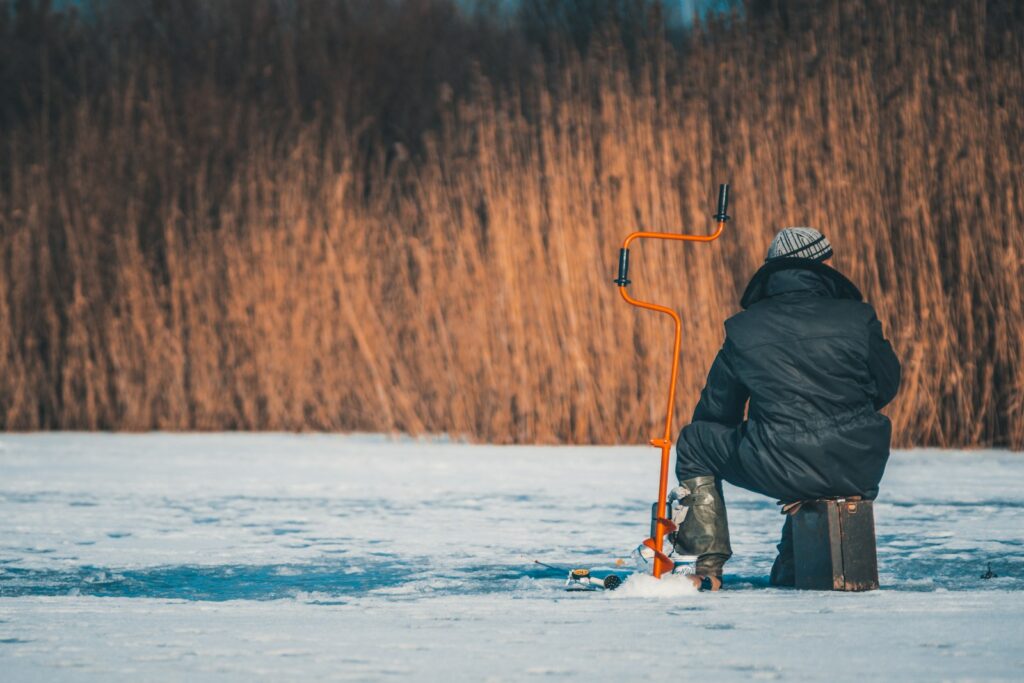
How you establish your fishing area contributes significantly to overall safety throughout your outing. After confirming adequate ice thickness, consider setting up near other anglers if possible—the community aspect not only enhances the experience but provides additional safety through numbers. Position your equipment to minimize trip hazards, keeping ice holes covered when not in use to prevent accidental stepping into them. If using a portable shelter, ensure it has adequate ventilation if you’ll be using any combustion heaters, as carbon monoxide poisoning represents a serious danger in enclosed ice fishing environments. Keep ice scoops and other safety equipment easily accessible rather than buried under fishing gear. Many experienced anglers recommend drilling extra holes around your primary fishing spot to “test” the surrounding ice, providing additional confidence in the area’s safety. If fishing after dark, maintain adequate lighting both for your fishing activities and to signal your position to others on the ice.
Safety Considerations for Children and Pets

Introducing children or bringing pets onto the ice requires heightened vigilance and additional safety measures. Children should always wear properly fitted personal flotation devices regardless of ice conditions, and should remain under direct adult supervision at all times. Establish clear boundaries for where children can walk or play, maintaining significant distance from areas with questionable ice or open water. When bringing dogs ice fishing, consider a canine flotation device with a handle that would allow you to lift them quickly if they broke through. Be aware that dogs don’t understand ice safety and may run toward dangerous areas if not properly controlled on a leash. Create a safe, enclosed area for both children and pets that has been thoroughly checked for ice thickness. Many experienced ice anglers recommend waiting until ice conditions are well beyond minimum thickness requirements before introducing children or pets to the activity, providing an extra margin of safety.
The Role of Technology in Ice Fishing Safety

Modern technology has significantly enhanced ice fishing safety when properly utilized. Smartphone apps providing real-time weather updates, ice condition reports, and GPS location sharing can all contribute to safer outings. Portable fish finders with temperature sensors can alert you to unusual warm water that might indicate thin ice conditions. Compact, waterproof VHF radios provide communication options in areas with poor cell service. Some anglers now use lightweight drones to scout ice conditions ahead of their travel path, identifying potential hazards before encountering them personally. Personal locator beacons (PLBs) or satellite messengers can summon emergency help even in remote areas without cellular coverage. While these technological aids enhance safety, they should complement rather than replace fundamental safety practices like proper ice testing, appropriate equipment, and good judgment—no technology can substitute for these core safety principles.
Planning Your Ice Fishing Trip with Safety in Mind

The safest ice fishing trips begin well before you set foot on frozen water. Start by researching your destination thoroughly, including typical ice conditions, known hazardous areas, and local emergency resources. Create a detailed trip plan that includes your intended fishing location, planned route across the ice, expected return time, and emergency contact information—then share this plan with someone who isn’t joining the trip. Pack emergency supplies including high-energy food, extra warm clothing, fire-starting materials, and basic first aid equipment. Check weather forecasts for your entire planned outing, being particularly cautious of approaching storms or significant temperature changes that could affect ice conditions. Many experienced anglers also schedule their trips to avoid being on the ice during dawn or dusk when visibility is reduced, or during extremely cold periods when equipment failures and cold injuries become more common. Remember that the most important safety decision often happens before leaving home—being willing to postpone or cancel a trip when conditions aren’t favorable.
Conclusion: Balancing Fun and Safety on the Ice
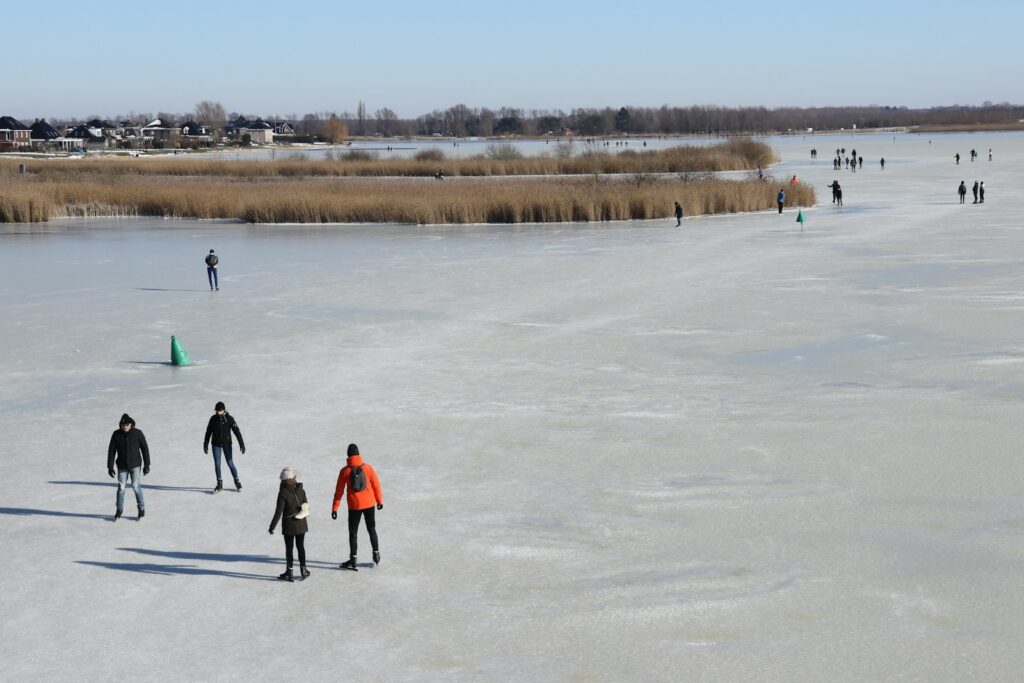
Ice fishing can provide incredible winter memories, unique fishing opportunities, and beautiful outdoor experiences when approached with the right knowledge and preparation. The key to enjoying this winter tradition lies in understanding that safety isn’t just an afterthought but an integral part of the activity itself. Many lifelong ice anglers develop a healthy respect for ice conditions that borders on cautious skepticism—they check and recheck, prepare for emergencies, and never take ice safety for granted regardless of their experience level. By following the guidance outlined in this article, properly equipping yourself, understanding how to assess ice conditions, and knowing how to respond to emergencies, you can significantly reduce the risks associated with ice fishing. Remember that no fish is worth risking your life for, and the best ice fishing stories are the ones you return home safely to tell. With proper preparation and respect for the environment, ice fishing can be a safe, rewarding winter activity for generations to come.
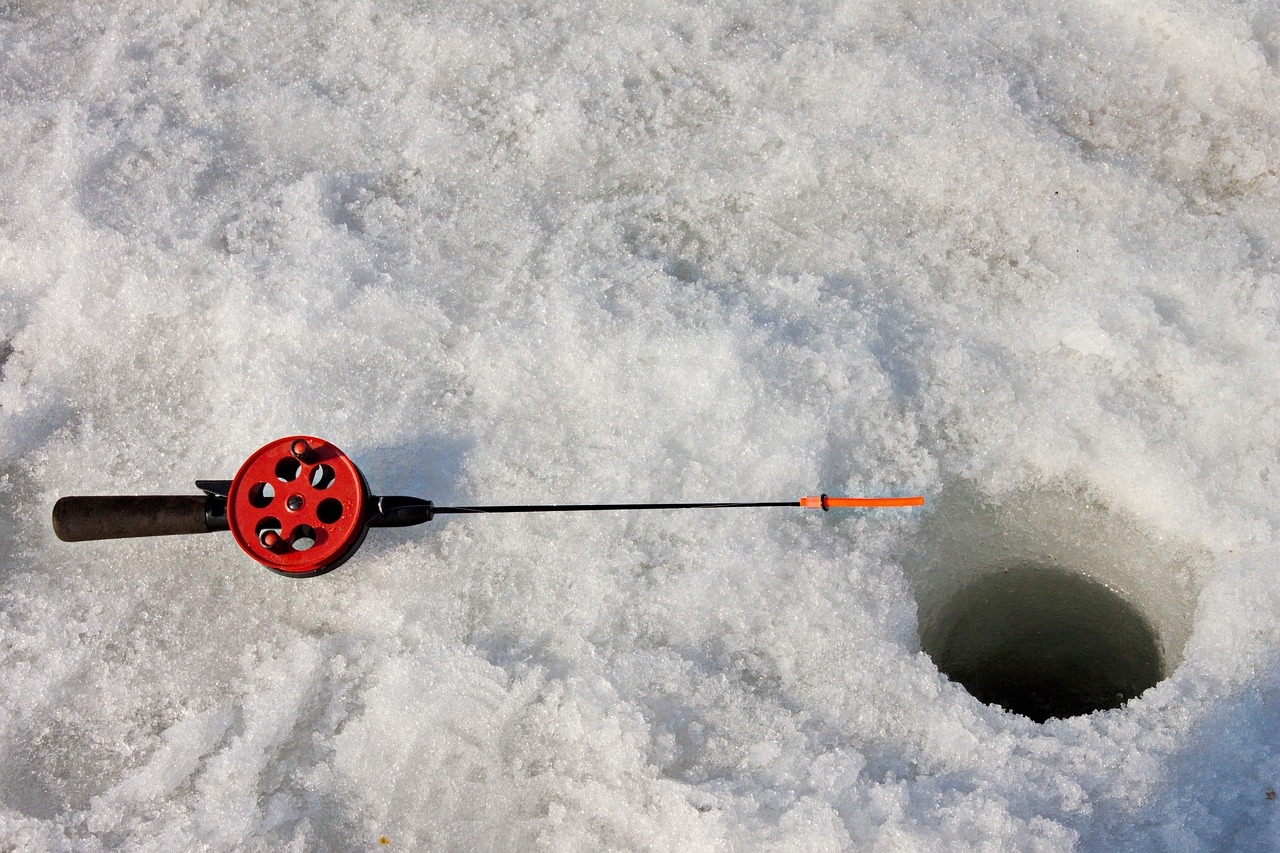
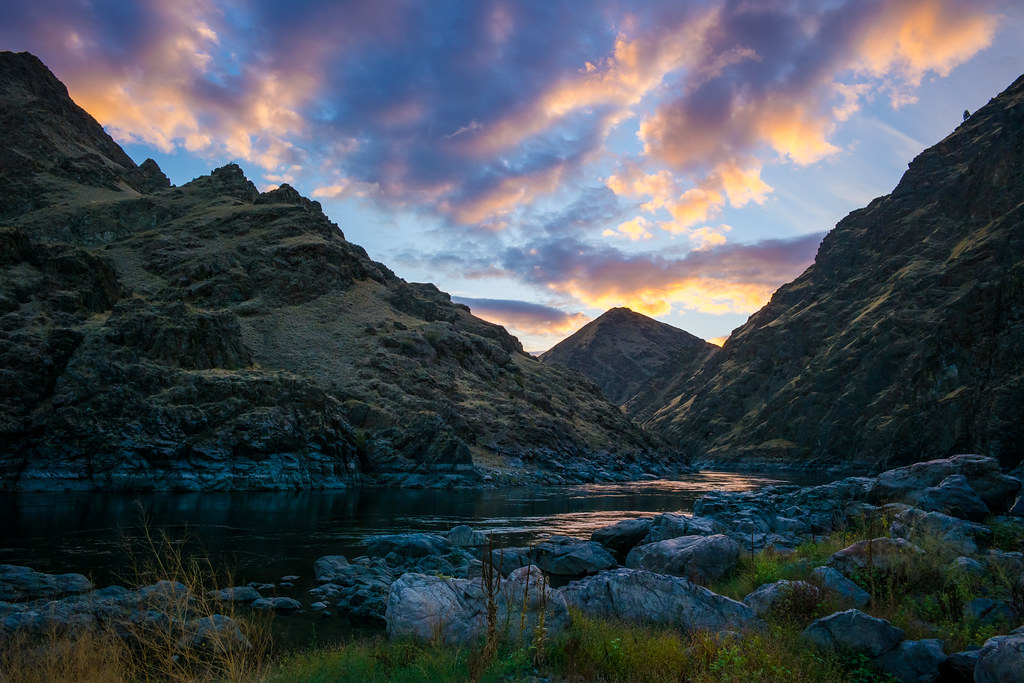












Post Comment